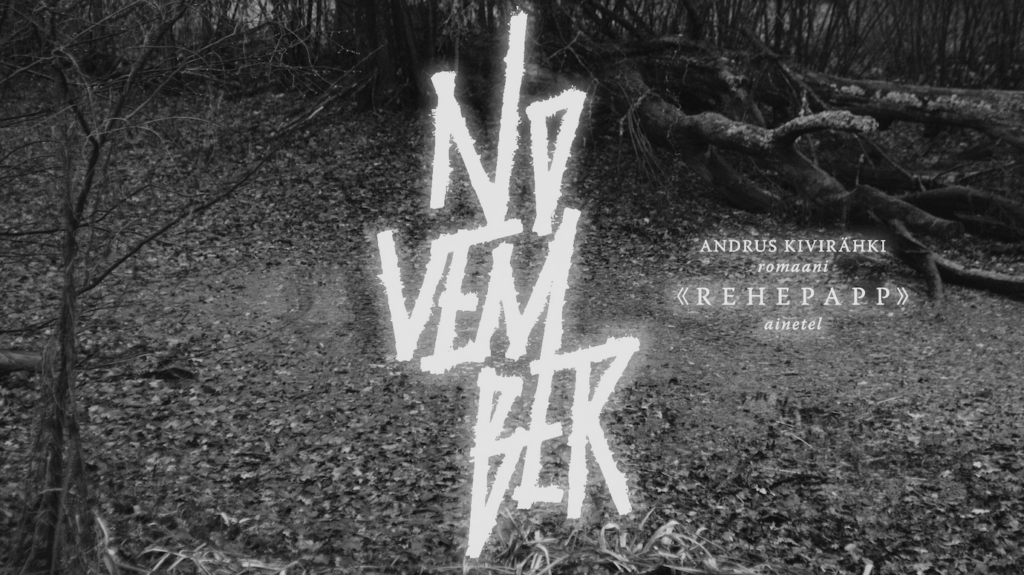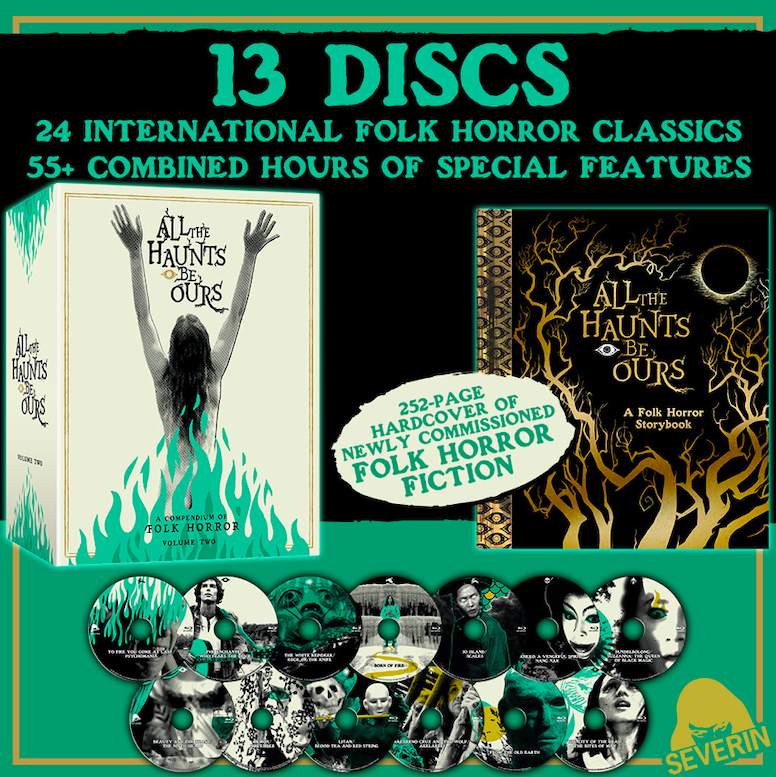INTERVIEW: An insider’s look at Severin’s second volume of ‘All the Haunts Be Ours’
Photo: One of the movies included in All the Haunts Be Ours: A Compendium of Folk Horror: Volume Two is Bakenko: A Vengeful Spirit. Photo courtesy of Severin / Provided by Foundry Comm with permission.
Severin Film has had a banner year of releases, with a promising 2025 on the horizon. Perhaps their most anticipated and critically acclaimed box set is the second volume of All the Haunts Be Ours: A Compendium of Folk Horror, which includes 13 discs and 24 international folk horror classics. At the center of the release is Kier-La Janisse, who curated and produced both volumes of this monumental series.
For the new set, fans can expect a truly international smorgasbord of films. Nearly every movie originates from a different country (18 countries are represented, to be exact), and there are diverse narratives being told. There are horror films about isolated communities that turn violent against outsiders, and then there are films that lean into folk creatures and legends of the land. Janisse, in curating the box set, was open to a wide definition of what constitutes a folk horror film. In fact, she explores that definition in Woodlands Dark and Days Bewitched, a documentary that is part of volume one of All the Haunts Be Ours.
“This project took three years,” Janisse said in a recent phone interview. “The Black Emanuelle box set is the one I did right before this, and that also took three years. So I would say something on this level, where we have more than 20 films, that’s about how long it takes. Because you have got to get the licenses for all the films and track down all the film elements and stuff like that and begin on the extras, so there’s a lot of scheduling with other people and waiting for films to be restored and go through that whole process. And so it can be a pretty lengthy process, so a lot of times I’m working on other projects at Severin at the same time, other less labor-intensive projects simultaneously. But, yeah, it’s a pretty epic workload.”
The new box set includes a lot of genre rarities and forgotten classics, including 1973’s Psychomania directed by Don Sharp, 1984’s The Enchanted directed by Carter Lord, 1977’s Io Island directed by Kim Ki-Young and 1968’s Bakeneko: A Vengeful Spirit directed by Yoshihiro Ishikawa. There are more contemporary movies as well, including this year’s Suzzanna: The Queen of Black Magic directed by David Gregory (produced by Severin for this box set) and 2017’s November directed by Rainer Sarnet. Each of these films is accompanied by extensive special features, including introductions, audio commentaries and documentaries.
Volume two came on the heels of volume one’s success. In fact, it’s believed that volume one of All the Haunts Be Ours, which is still available to purchase, is the best-selling box set in Severin’s history.
“As far as I know, it was the most successful box set we ever did,” Janisse said. “That wouldn’t necessarily determine that we would just automatically do a followup to it or anything. It was really more that some of the films we were trying to get the first time around, we didn’t manage to lock them in in time for the first box set, and so we didn’t want to just give up on those negotiations. We were like, well, let’s keep trying to get these movies. Maybe if there’s enough movies that you would still want to consider, maybe we can do another box set, but we never imagined that we would end up making a bigger box set than the first one. We always thought it would just be an add-on, like another box set with maybe 10 films, but then as we started working on it, it ended up just being more and more films. So it’s actually bigger than the first box set.”
Janisse took care of the entire curation for both volumes, so she had to question herself on which horror films should be included. That’s a dicey proposition because each audience member might define folk horror along different terms. She decided to go with an expansive definition.
“The curating was done by me, so there’s not necessarily other people at Severin that I’m bouncing these ideas off of in terms of what films to include,” she said. “But I would say that based on the research that I was doing when I did my documentary, Woodlands Dark and Days Bewitched, the debate about how to define folk horror is a longstanding one, and it’s not going to come to a conclusion anytime soon. So I mean as many people who would argue that certain films are not folk horror there are probably just as many people who think it is folk horror, and that what the other people think is folk horror is not folk horror. So when I was interviewing people, there tended to be one version of folk horror, which was very Anglo-centric and very focused on the isolated community that has a strange belief system, and an outsider comes into that community and faces some sort of confrontation with that community.”
She added: “Then, there were other people I spoke to who really interpreted folk horror as being much more connected to folklore, fairy tales, folk tales, folkloric creatures, things like that, and so between those two dominant schools of thought, the box set tries to cover various angles of how people interpret folk horror. But at no point in my movie did I try to actually define or make any kind of clear statement about what folk horror is because to me the idea that its definition is mutable and fluid is one of the things that is interesting about it.”
There are certain foundational films in the folk horror subgenre that have had an obvious influence on everything that came after. One of them is The Wicker Man, which is not included in either box set, although it’s interesting because volume one does include 1970’s Robin Redbreast, directed by James MacTaggart, which is seen as a precursor to The Wicker Man.
“I would say The Wicker Man is a really, really big influence on the template of folk horror, especially in terms of that Anglo-centric version of folk horror where you have an isolated community with the belief system,” Janisse said. “And so that is a type of folk horror that is very strong.”
One extra special feature for the volume two box set is the inclusion of a hardcover book that runs 252 pages. Within its pages are original folk horror tales that were commissioned for All the Haunts Be Ours.
“The thing I really wanted to do was not just be commenting on folk horror or analyzing folk horror but actually contributing to new folk horror being made, and so we did that in a number of ways in the new box set,” she said. “We had, of course, the book, so there are 12 different authors that were commissioned to write an original folk horror story for that book. … We’ve got the short film by Sean Hogan, To Fire You Come at Last, which is also doubling as the first episode in our Christmas ghost story series, The Haunted Season, that we just announced a few days ago that will be premiering on Shudder this December. … So, yeah, there are a few different ways that we created new work to add to the ongoing conversation about folk horror.”
By John Soltes / Publisher / John@HollywoodSoapbox.com
All the Haunts Be Ours: A Compendium of Folk Horror: Volume Two, curated by Kier-La Janisse, is now available from Severin Films. Click here for more information.



